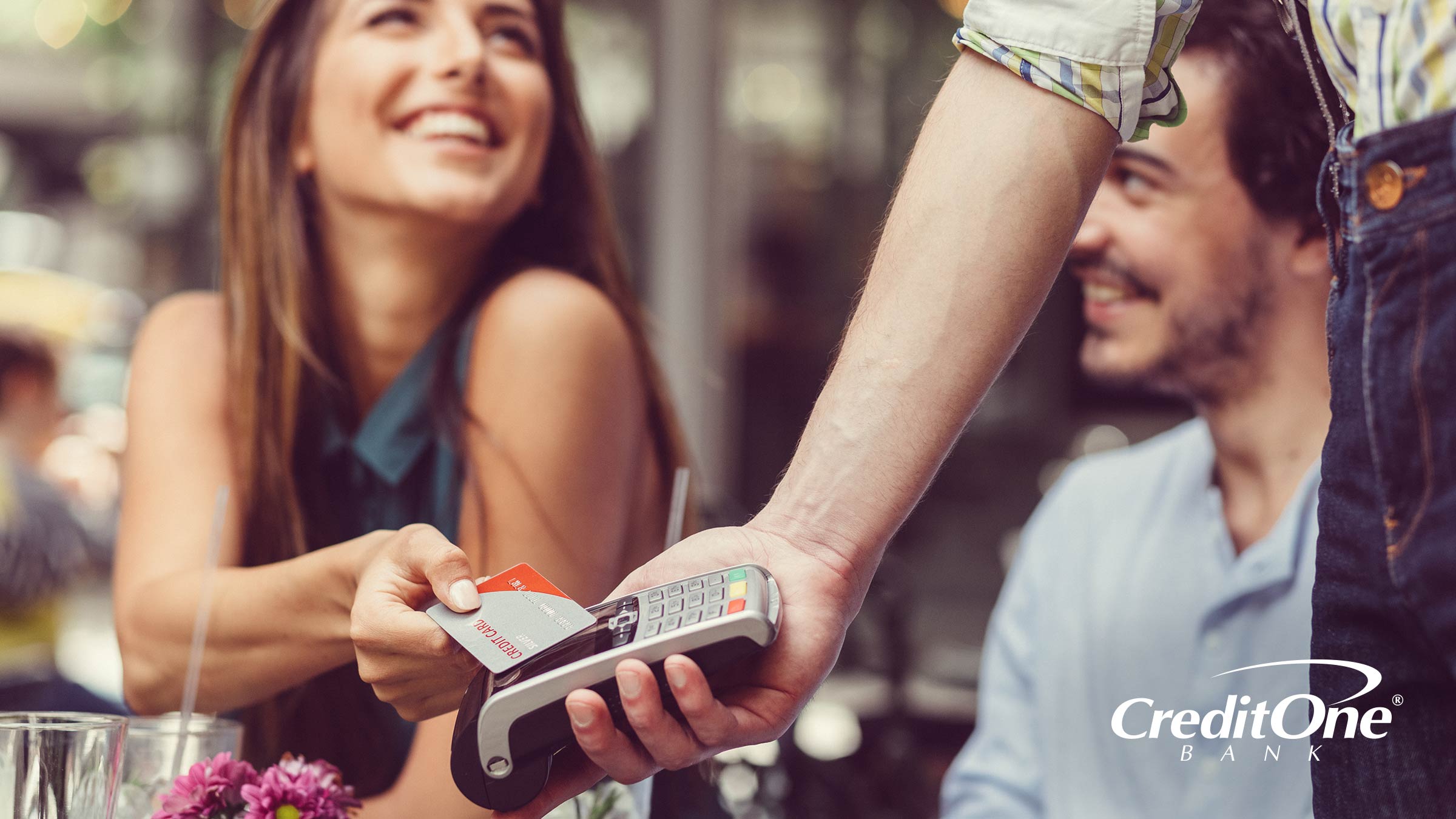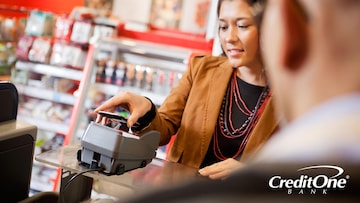April 09, 2021
Contactless payments are fast, easy, and secure. Not sure what they’re all about? Read on to get a grip on contactless.


What Is Contactless Payment?
A contactless payment occurs when you pay for something with a credit card, debit card, or mobile device without making physical contact (or making only minor physical contact, like touching) with a terminal. While contactless payments using digital wallet apps like Apple Pay, Google Pay, or Samsung Pay have become popular, we’re going to confine our discussion in this article to contactless payments made with credit cards. The process and technology are similar with both methods.
What is a Contactless Credit Card?
A contactless credit (or debit) card is a card that doesn’t require you (or a merchant) to insert the card’s EMV chip into a terminal or swipe the card’s magnetic stripe in order to process a purchase. With a contactless card, all you have to do is tap the card on the terminal’s sensor or hold it within an inch or two of that sensor to make a purchase. The whole process typically takes only a few seconds.
How to Know if You Have a Contactless Card
Contactless credit and debit cards are clearly marked with a graphic made up of four parallel curved lines, each progressively longer than the preceding one. It looks like radio waves being transmitted and resembles a Wi-Fi icon, only the waves are being transmitted to the east instead of north. Depending on the card issuer, this icon may reside on the front or back of the card.
It’s important to understand that having a credit or debit card capable of making contactless transactions does not mean all of the purchases made with it will be contactless. The card is only half of the equation. In order for a contactless transaction to be processed, the merchant’s credit card terminal must also be equipped with contactless technology.
How Contactless Card Transactions Work
Contactless cards utilize radio-frequency-identification (RFID) technology to communicate with terminals equipped to read them. The card itself has a computer chip and a miniscule antenna that transmits the necessary information to the terminal. The terminal then authenticates the information before sending the transaction to the card issuer, where it is approved or denied. All of this happens in a matter of seconds.
For you, the consumer, all you have to do to make a contactless purchase is verify that the terminal has a contactless icon on it, hold your card within a couple of inches of the terminal’s sensor, and then wait for approval verification, which may be expressed in the form of a green light, beeping, or some other indicator.
A Secure Transaction
Contactless cards generate a one-time code specific to the transaction you’re making. So, even if a fraudster were to acquire the information from your contactless transaction, it would be extremely difficult for them to use that information to make fraudulent purchases, because the unique transaction code acquired would be of no use for subsequent transactions.
This unique transaction code makes a contactless transaction more secure than a transaction made via a card’s magnetic stripe and just as secure as a transaction made by physically inserting the EMV chip into a terminal. And it’s substantially faster!
Contactless Card Usage
According to a Mastercard study published in April of 2020, 79% of worldwide respondents stated they were currently utilizing contactless payments, which included contactless cards and mobile wallets.
Visa found that 31 million Americans made a contactless transaction with a Visa contactless card or digital wallet in March of 2020—and that contactless usage in the U.S. had grown 150% since March of 2019. While the United States may have initially lagged behind other parts of the planet in contactless card usage, according to Visa, the U.S. now has the most contactless cards of any country in the world.
Contactless Card Pros:
We’ve already covered some of the advantages of contactless cards, but let’s do a quick recap, plus add a few we haven’t yet covered
1. They’re Fast: Contactless is faster than swiping and dipping. Your transaction is typically completed in a matter of seconds.
2. They Provide Backup: Not every merchant is going to have a contactless terminal. In fact, you’re also likely to encounter merchants out there that don’t yet have EMV chip-reading terminals. That’s why contactless cards come with both an EMV chip and a magnetic stripe to offer three ways for you to make a purchase with your card.
3. They Can Be Cleaner: In the age of coronavirus, this can be a big selling point. If you don’t actually tap the card, that means it makes less contact with public surfaces than a card you swipe or dip. Of course, if you hand your card to a merchant—or dip or swipe your card when a contactless terminal isn’t available—that advantage goes out the window.
4. Less Friction Could Mean Less Wear and Tear: Credit and debit cards can get worn out from extensive use. Every time you insert an EMV chip into a card reader or swipe a magnetic stripe, that creates friction, which can eventually damage a chip or stripe. A contactless card doesn’t have to touch anything but your hand to make a purchase.
5. They’re Secure: As previously mentioned, going contactless is more secure than using a card’s magnetic stripe and as secure as an EMV chip.
Contactless Card Cons:
1. They May Have a Spending Limit: No, we’re not talking about reaching your card’s credit limit. Contactless credit cards typically have a limit, set by the card issuer, on how much can be purchased contactlessly. Once you’ve reached the limit, you can’t make any more contactless transactions with the card in that billing cycle. This is for your own protection against Con #2, which we’ll cover next.
The good news is that, once you’ve reached the contactless spending limit, you can still make near-contactless purchases. Holding your card near the sensor of a contactless-enabled terminal will still transmit the necessary information, which will be received and transmitted to the card issuer. However, once you’ve met your card’s contactless spending limit, you may have to enter a PIN for the transaction to be approved. Entering a PIN definitely slows down the process, but it’s for your own protection.
So, if your card has a $200 monthly contactless transaction limit, and you only make contactless purchases at your local coffee shop for your daily $5 latte, you should be able to make all the contactless purchases you want that month. But, if you have the same $200 limit and try to make a contactless purchase for $300 worth of groceries, you’ll probably need to enter your PIN for the transaction to be approved.
2. They Can Be Easier for Thieves to Use: Because all you have to do is place the card near the terminal and the transaction is completed, contactless cards are easy to use if stolen. Once a thief reaches the card’s contactless spending limit, unless they also have your PIN, they shouldn’t be able to make any more contactless purchases.
Of course, they may still be able to make purchases using the card’s magnetic stripe or EMV chip, so be sure to notify your credit card issuer as soon as you realize any credit card of yours has been lost or stolen, no matter what kind of technology it utilizes.
Contactless capability is merely the next iteration of credit card technology and nothing to be feared. It’s quick, secure, and convenient. But, if you’re not ready to go contactless, go ahead and insert the card’s EMV chip. A contactless card gives you the most payment options.
See if you Pre-Qualify for a Credit One Bank credit card? It takes less than a minute and won’t harm your credit score.
After realizing he couldn’t pay back his outrageous film school student loans with rejection notices from Hollywood studios, Sean focused his screenwriting skills on scripting corporate videos. Videos led to marketing communications, which led to articles and, before he knew it, Sean was making a living as a writer. He continues to do so today by leveraging his expertise in credit, financial planning, wealth-building, and living your best life for Credit One Bank.



